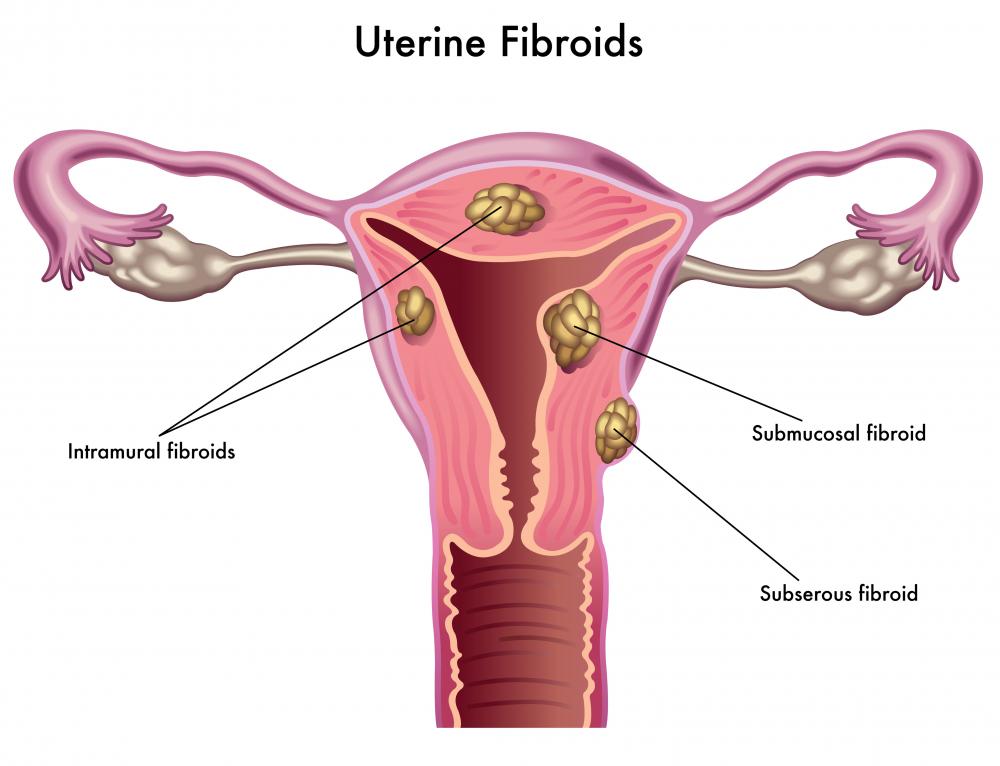At WiseGEEK, we're committed to delivering accurate, trustworthy information. Our expert-authored content is rigorously fact-checked and sourced from credible authorities. Discover how we uphold the highest standards in providing you with reliable knowledge.
What is the Difference Between a Hysterectomy and Oophorectomy?
Hysterectomy and oophorectomy are both surgical procedures performed on women that remove organs important to the female reproductive system. Usually, these procedures are undertaken for medical reasons. During a hysterectomy, a woman's uterus is removed. A hysterectomy can sometimes include an oophorectomy, which is when one or both of a woman's ovaries are removed from her body.
Hysterectomy and oophorectomy can also occur separately. A woman cannot get pregnant after her uterus is removed, however, if her ovaries remain, she will continue to produce eggs. If a woman undergoes an oophorectomy, she will immediately go through menopause after the surgery and will experience common menopause symptoms, such as hot flashes.

There are several reasons why a woman may have to undergo hysterectomy or oophorectomy. One common reason for a hysterectomy is uterine fibroids, non-cancerous tumors that grow in the uterus. Fibroids can cause bleeding, pain in the pelvic area, and can disrupt the function of the bladder. Tumors can also grow in the ovaries, resulting in an oophorectomy.

Endometriosis is another common reason for hysterectomy and oophorectomy. If a woman suffers from endometriosis, the lining of her uterus grows on other organs in her body, such as the ovaries. The misplaced endometrium still breaks down and sheds every month, but has no way of exiting the body, which can cause a lot of pain as well as fertility problems. While some women find relief from hormonal therapies or simple pain killers, hysterectomy and oophorectomy is the only effective option for some.

Women with ovarian cancer or cervical cancer may undergo hysterectomy and oophorectomy. Either or both of the two procedures may be performed on women who have a high risk for the cancers but do yet have symptoms. A hysterectomy can be done to treat or prevent cancer of the uterus or endometrium as well. Since removing the ovaries lowers the amount of estrogen a woman produces, women who have a genetic risk for breast cancer may undergo a preventative oophorectomy to reduce their chances of developing the cancer.

Other reasons for performing an oophorectomy on its own include ovarian torsion or a tubo-ovarian abscess. Ovarian torsion occurs when an ovary becomes twisted, usually as a result of a cyst. An tubo-ovarian abscess is a pus-filled lesion between the fallopian tube and ovary. In such cases, one or both of the ovaries can be removed.
Hysterectomy and oophorectomy can be performed either by making a large incision into the abdomen and removing the organs, or laproscopically, where several small cuts are made. Laproscopic procedures usually result in less visible scars and a quicker recovery time. A doctor decides which procedure is appropriate based on the condition of the patient. In some cases, what starts as a laproscopic procedure may turn into an open procedure in the course of the surgery.
AS FEATURED ON:
AS FEATURED ON:















Discuss this Article
Post your comments